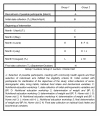Non-pharmacological treatment of hypertension in primary health care: a comparative clinical trial of two education strategies in health and nutrition
- PMID: 21831277
- PMCID: PMC3171370
- DOI: 10.1186/1471-2458-11-637
Non-pharmacological treatment of hypertension in primary health care: a comparative clinical trial of two education strategies in health and nutrition
Abstract
Background: Poor adherence to non-pharmacological treatment of hypertension represents a serious challenge for public health policies in several countries. This study was conducted to compare two intervention strategies regarding the adherence of adult women to dietary changes recommended for the treatment of hypertension in a community covered by Primary Health Care Unit.
Methods: This study is a randomized controlled trial of a sample composed of 28 women with hypertension enrolled in the Primary Health Care Unit located in the urban area of southeastern Brazil. The participants were already undergoing treatment for hypertension but devoid of nutritional care; and were divided into two groups, each composed of 14 individuals, who received interventions that consisted of two different strategies of nutritional guidance: monthly health education workshops alone (Group 1) and combined with family orientation through home visits (Group 2). Adherence to nutritional guidelines was evaluated by dietary, anthropometric, clinical and serum biochemical parameters, measured before and after the interventions. Knowledge on control and risk of hypertension was also investigated. The study lasted five months.
Results: Mean age was 55.6 (± 2.8) and 50.7 (± 6.5) in the groups 1 and 2, respectively. The home orientation strategy promoted greater adherence to dietary changes, leading to a statistically significant improvement in the clinical, anthropometric, biochemical and dietary parameters. The group 2 reduced the consumption of risk foods (p = 0.01), oil (p = 0.002) and sugar (p = 0.02), and decreased body mass index (-0.7 kg/m2; p = 0.01); waist circumference (-4.2 cm; p = 0.001), systolic blood pressure (-13 mm HG; p = 0.004) and glycemia (-18.9 mg/dl; p = 0. 01). In group 1 only waist circumference (-2 cm; p = 0.01) changed significantly.
Conclusion: Nutritional orientations at the household level were more effective with regard to the adherence of individuals to non-pharmacological treatment of hypertension, regarding the reduction of clinical and behavioral risk parameters.
Figures


References
-
- World Health Organization. 40th session of the subcommittee on planning and programming of the executive committee. Regional strategy on an integrated approach to the prevention and control of chronic diseases, including diet, physical activity, and health. Washington: WHO; 2006.
-
- Brasil. Ministério da Saúde. Hipertensão Arterial Sistêmica. Brasília: MS; 2006. MS. Normas e Manuais Técnicos.
-
- Ribeiro AG, Cotta RMM, Ribeiro SMR. A Promoção da Saúde e a Prevenção Integrada dos Fatores de Risco para Doenças Cardiovasculares. Ciênc Saúde Coletiva [online] 2009;0802:1–16.
-
- Brasil. Ministério da Saúde. Secretaria de Atenção à Saúde. Departamento de Atenção Básica. Coordenação Geral da Política de Alimentação e Nutrição. Guia Alimentar da População Brasileira. Promovendo a alimentação saudável. Brasília: MS; 2005.
-
- World Health Organization. The Global Strategy on Diet, Physical Activity and Health. Washington: WHO; 2003.
Publication types
MeSH terms
LinkOut - more resources
Full Text Sources
Medical

